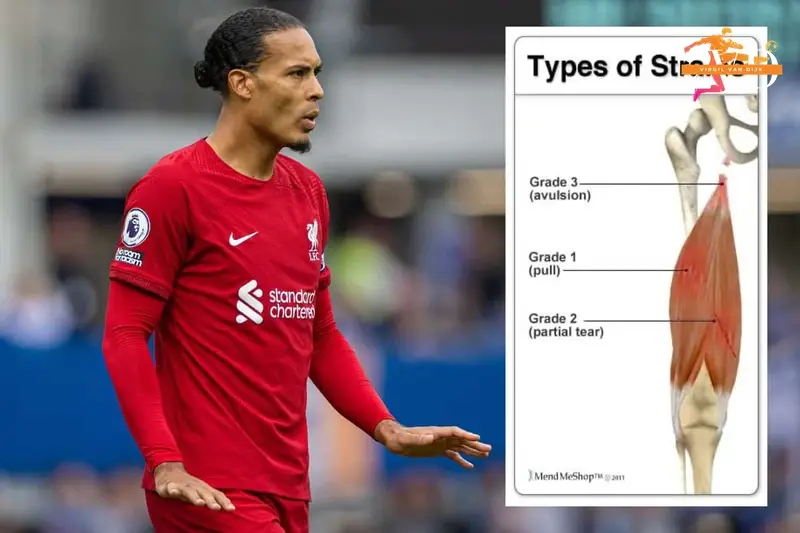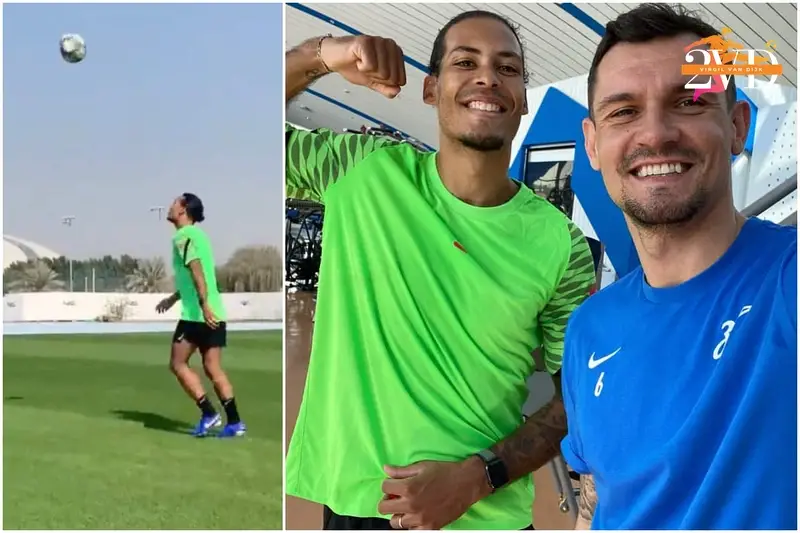The absence of Virgil van Dijk, a colossus at the heart of Liverpool’s defense, has been a keenly felt void. The initial reports of his anterior cruciate ligament (ACL) injury painted a grim picture, a season-ending blow that not only sidelined him but also cast a shadow over his team’s ambitions. However, as with many elite athletes, Van Dijk’s journey back to the pitch is a testament to resilience, meticulous rehabilitation, and strategic planning.
While a precise “expected return date” remains fluid, the available information suggests a phased re-integration, prioritizing long-term performance over a premature comeback. This isn’t just about healing a ligament; it’s about rebuilding a player, ensuring he returns not just fit, but fully functional and mentally prepared for the rigors of top-flight football. From a Transfer & Contract standpoint, Liverpool’s handling of Van Dijk’s rehabilitation also reflects the importance of safeguarding multimillion-pound assets through science-driven recovery management.The focus has clearly shifted from a race against time to a deliberate, science-backed process, aiming to avoid any potential setbacks that could derail his career.

A Multifaceted Rehabilitation
Van Dijk’s recovery is not a singular event but a complex, multi-stage process that delves into the physical, mental, and tactical aspects of his game. It’s a journey that mirrors the careful construction of a magnificent edifice, where each brick, each beam, must be perfectly placed and secured.
Phase 1: The Crucial Healing Period
Following the initial surgery, the primary objective was to allow the ACL to heal adequately. This phase is characterized by strict rest and passive rehabilitation. Think of it as the foundational work: allowing the soil to settle after digging, before any construction can begin. This period involves:
- Pain and Swelling Management: Early interventions focus on reducing discomfort and inflammation, essential for creating a conducive environment for tissue repair.
- Restoration of Range of Motion: Gentle exercises are introduced to prevent stiffness and regain the knee’s natural movement capabilities. This might involve passive bending and straightening, guided by physiotherapists.
- Activation of Surrounding Muscles: Even while the ACL is healing, it’s vital to maintain the strength and function of the muscles that support the knee. This could be through isometric exercises, where muscles are tensed without joint movement, preventing atrophy.

Phase 2: Building Strength and Stability
Once the initial healing is well underway, the focus shifts to active strengthening and regaining neuromuscular control. This is where the real “rebuilding” begins, akin to constructing the walls and framework of our edifice. This phase is demanding and requires significant dedication:
- Progressive Resistance Training: Gradually increasing the load on the knee through exercises like squats, lunges, and hamstring curls. The key here is progressive overload, ensuring the healing tissue is challenged but not overwhelmed.
- Proprioception and Balance Exercises: The ACL plays a crucial role in our body’s sense of position and movement. Re-establishing proprioception is paramount. This involves exercises on unstable surfaces, single-leg stands, and balance drills to retrain the brain-muscle connection. Imagine learning to walk again on a tightrope – it requires immense concentration and body awareness.
- Cardiovascular Conditioning: While not directly working the injured leg, maintaining aerobic fitness is crucial for overall well-being and preparing the body for the demands of a match. This might involve stationary cycling or swimming in the early stages.

Phase 3: Sport-Specific Drills and Gradual Reintegration
This is the most critical and often the most challenging phase, where Van Dijk transitions from general fitness to the specific demands of football. It’s like testing the integrity of the newly built structure under various stresses before it’s fully occupied. This phase involves:
- Agility and Plyometrics: Introducing explosive movements, jumping, landing, and cutting drills. These are designed to mimic the unpredictable actions in a football match and ensure the knee can withstand high impact forces. The ability to change direction sharply and safely is a cornerstone of a defender’s game, and this is where it’s meticulously honed.
- Ball Work and Tactical Integration: Gradually reintroducing the ball, starting with simple passing and dribbling drills, and progressing to more complex scenarios involving defensive positioning and tackling. This phase also involves mental preparation, as fear of re-injury can be a significant hurdle.
- Controlled Return to Training: Participation in non-contact training sessions, followed by limited involvement in full training, before finally being cleared for match action. This is a risk-management strategy, ensuring a smooth transition and minimizing the chance of a relapse.

Implications for Liverpool and Beyond
Van Dijk’s absence has not only impacted Liverpool’s defensive solidity but has also had broader implications for their tactical setup and overall performance. His return, however, is not just about filling a gap; it’s about recalibrating the team’s defensive architecture.
Tactical Reshaping and Defensive Reorganization
Without their talisman, Liverpool have had to adapt. This has seen different defensive partnerships tested, with varying degrees of success. Van Dijk’s return signifies an opportunity to re-establish their renowned defensive structure, characterized by:
- Leadership and Organization: Van Dijk’s vocal presence and ability to read the game are unparalleled. His return will undoubtedly boost the confidence and organization of the entire backline, allowing midfielders to press higher with greater assurance.
- Aerial Dominance: His height and strength make him a formidable presence in the air, crucial for defending set-pieces and nullifying long balls.
- One-on-One Prowess: Van Dijk’s ability to intercept, tackle, and hold off attackers one-on-one is a cornerstone of Liverpool’s defensive resilience.

The Psychological Impact: Confidence and Assurance
The return of a key player like Van Dijk has a profound psychological impact on both the team and the opposition.
- For Liverpool: His presence instills a sense of security and belief. It’s like a general returning to lead his troops, inspiring renewed confidence and a return to their accustomed high standards.
- For Opponents: Teams know the challenge of breaking down a Liverpool defense marshaled by Van Dijk. His return can be a deterrent, forcing opponents to rethink their attacking strategies.
